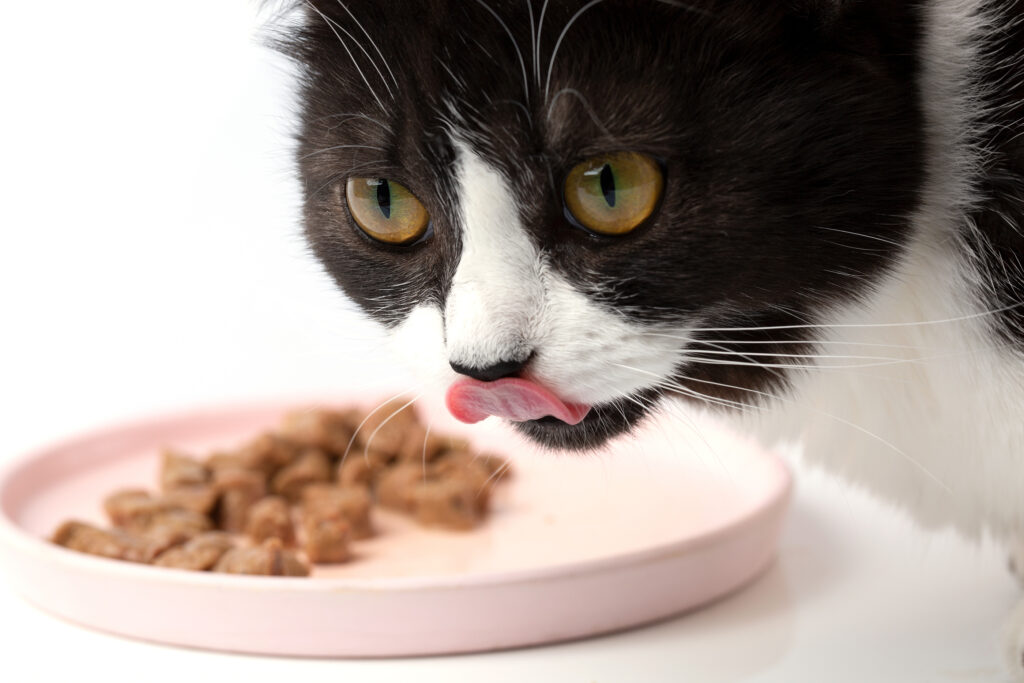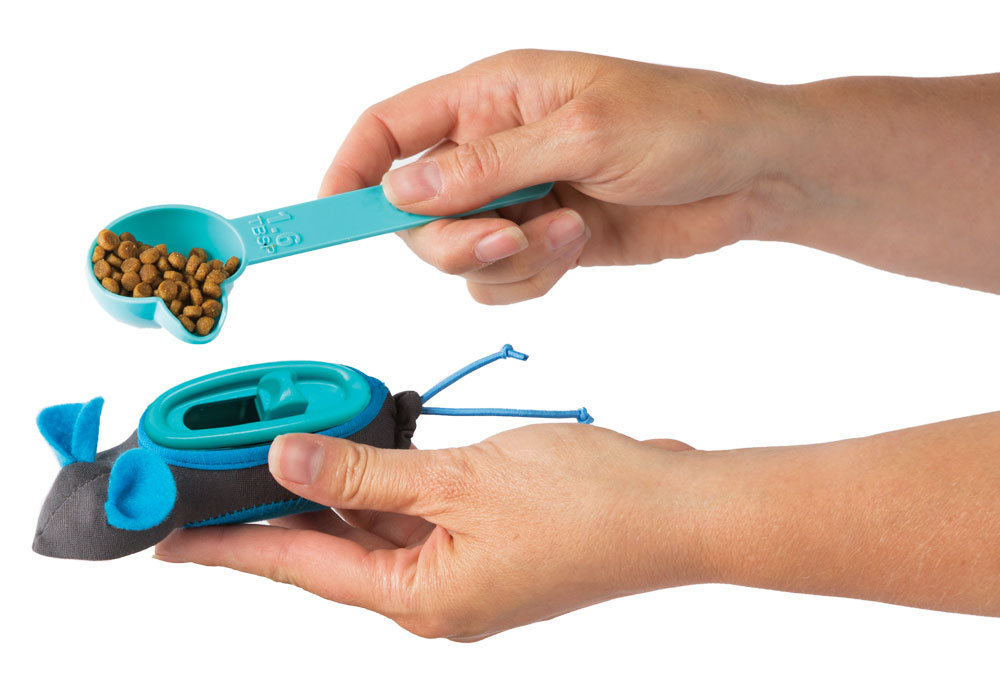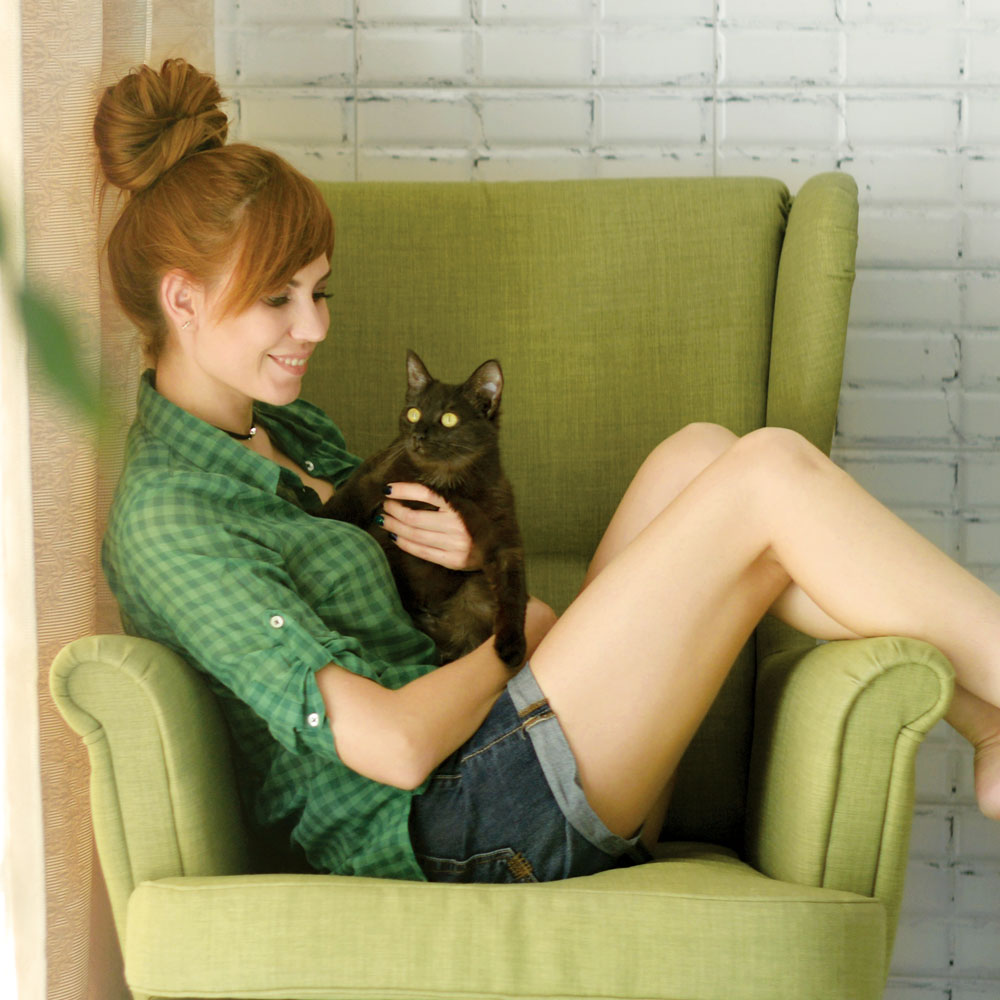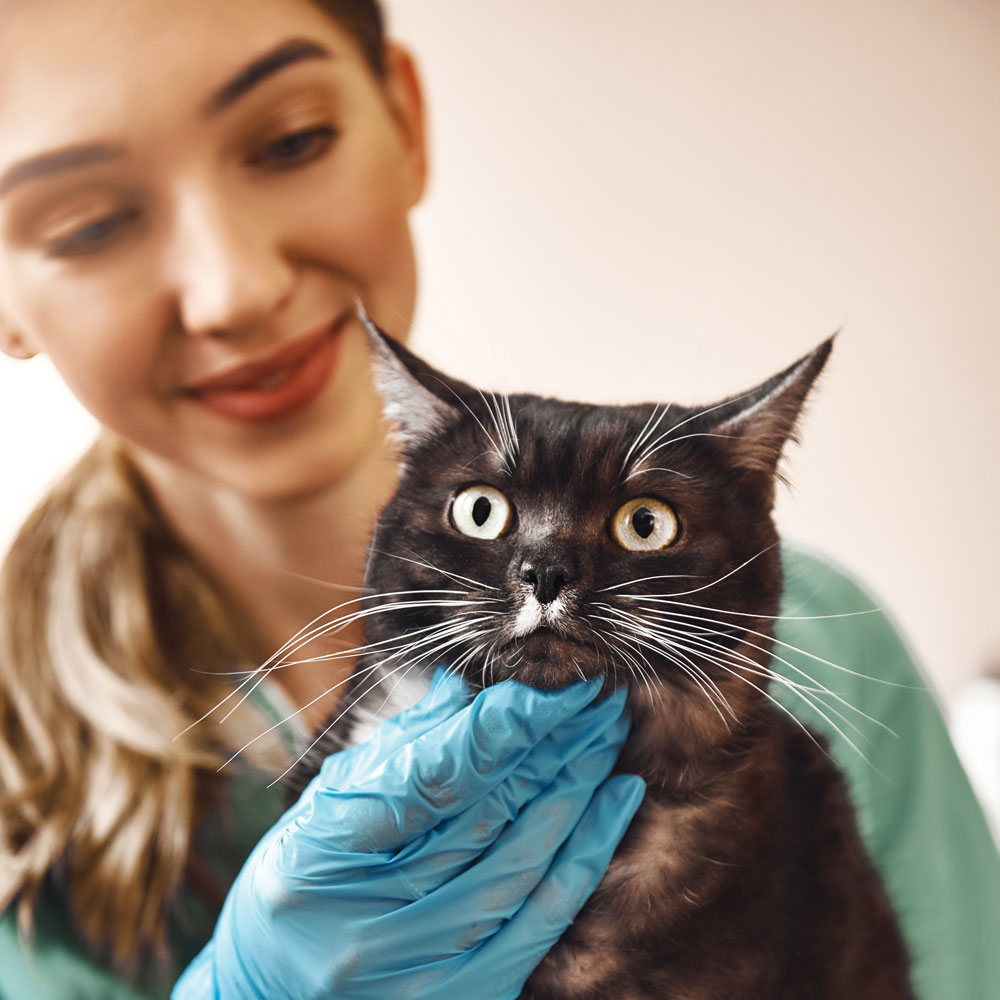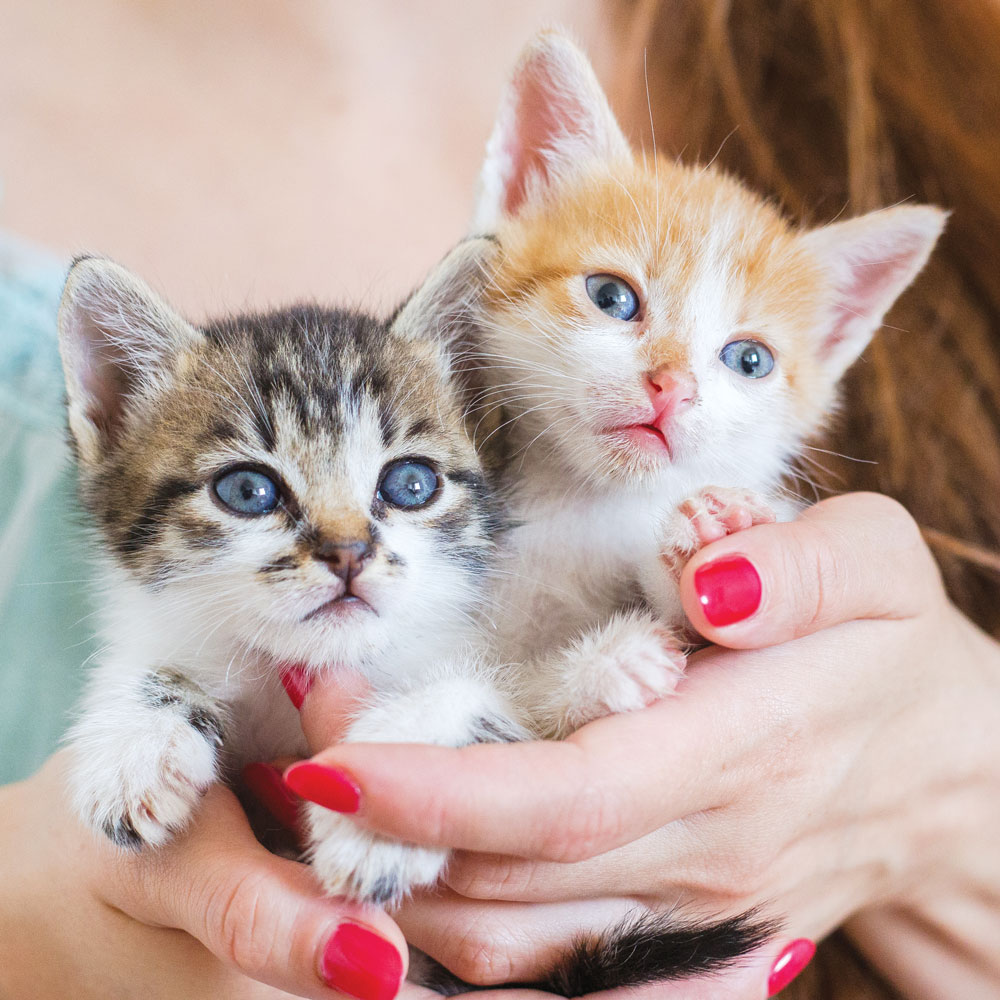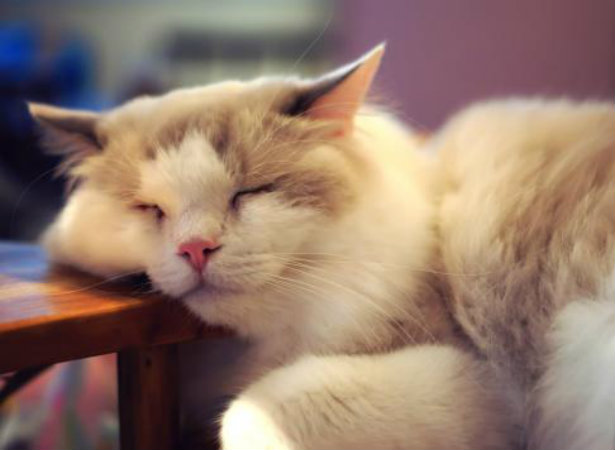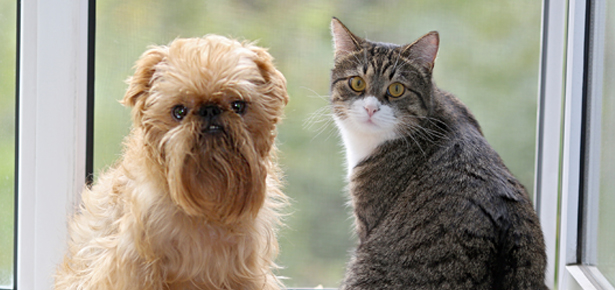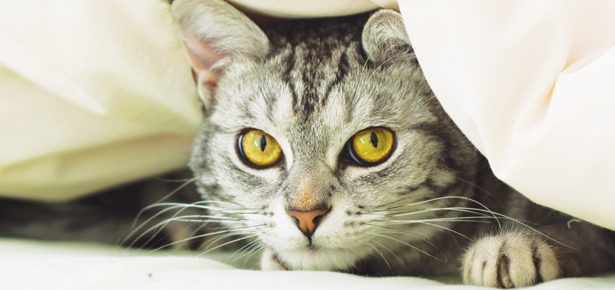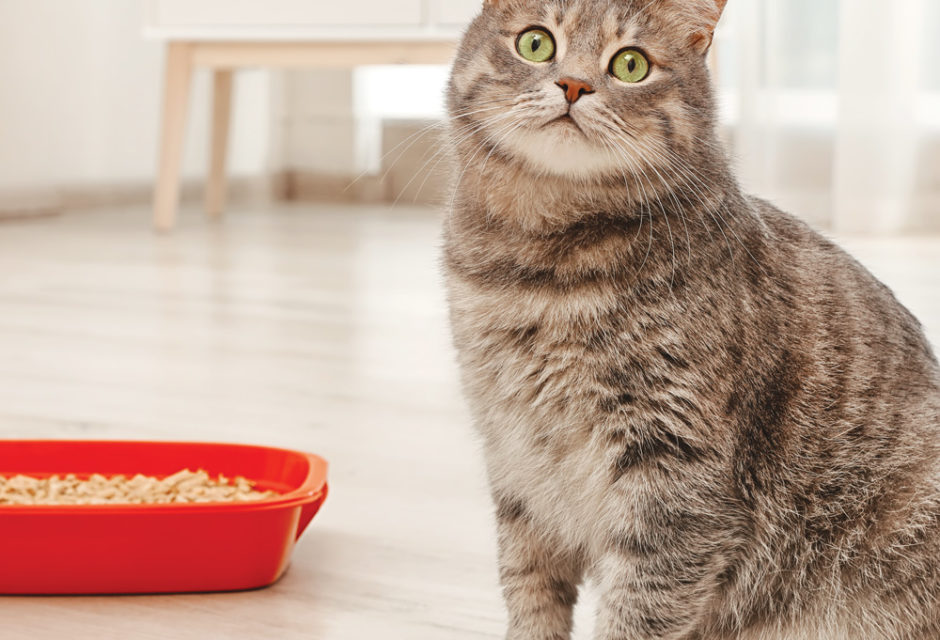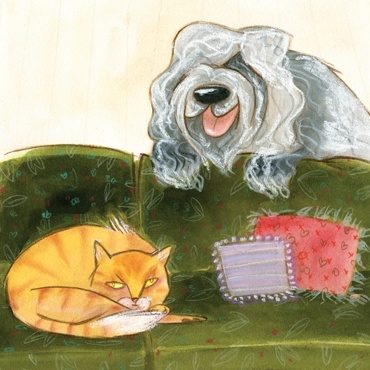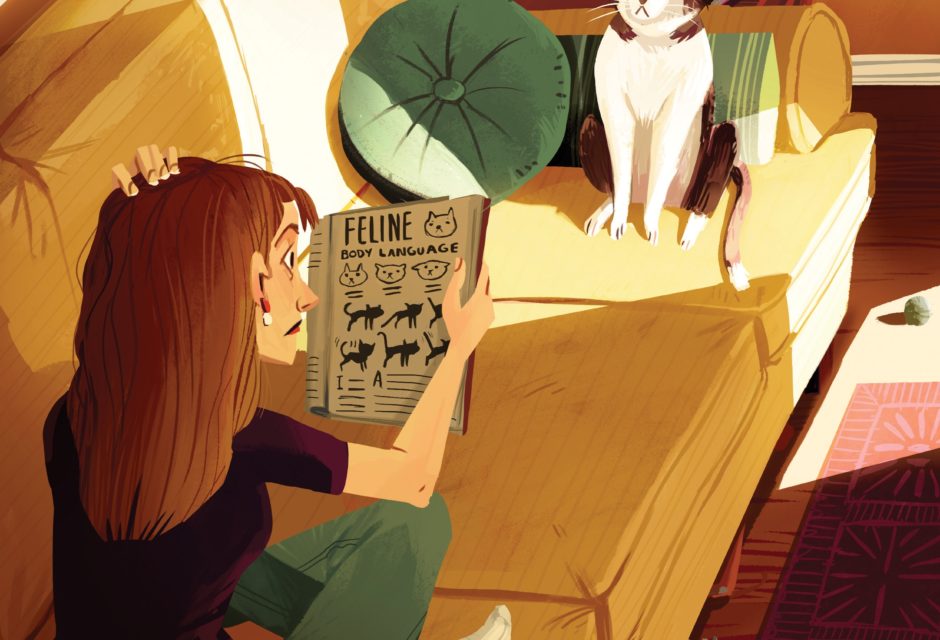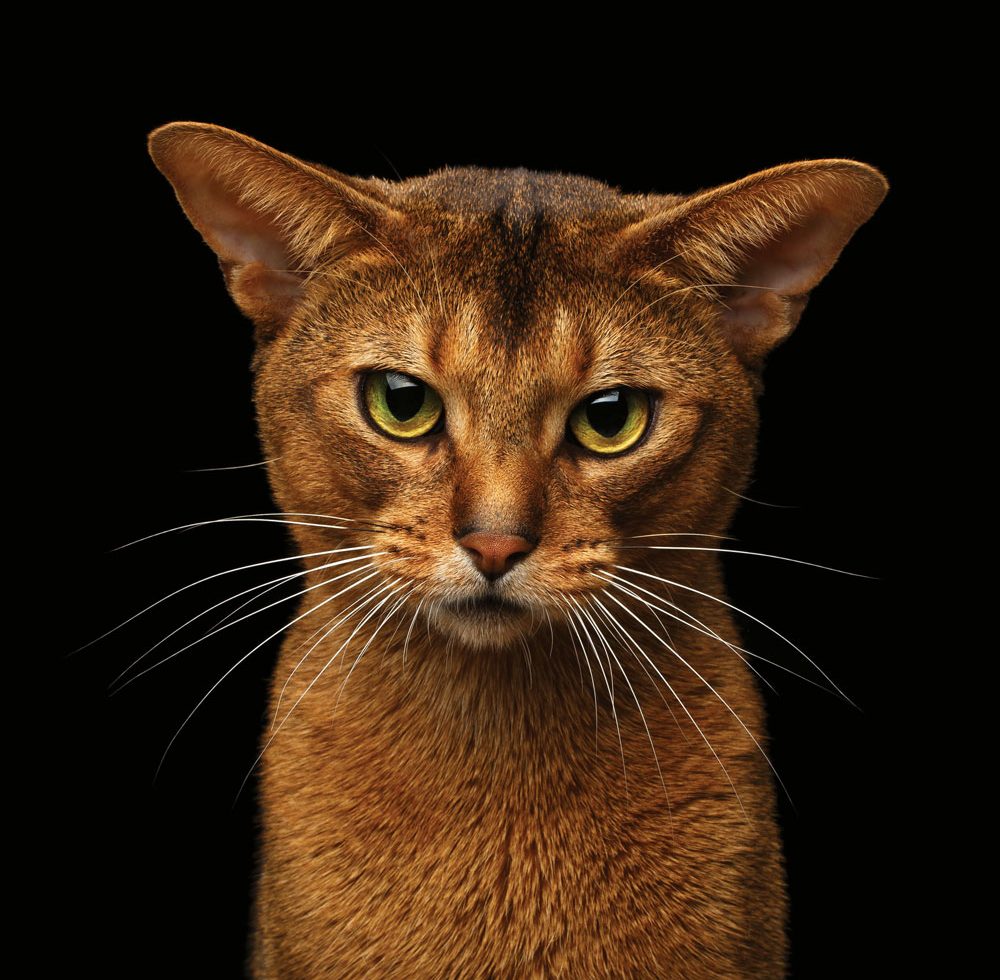
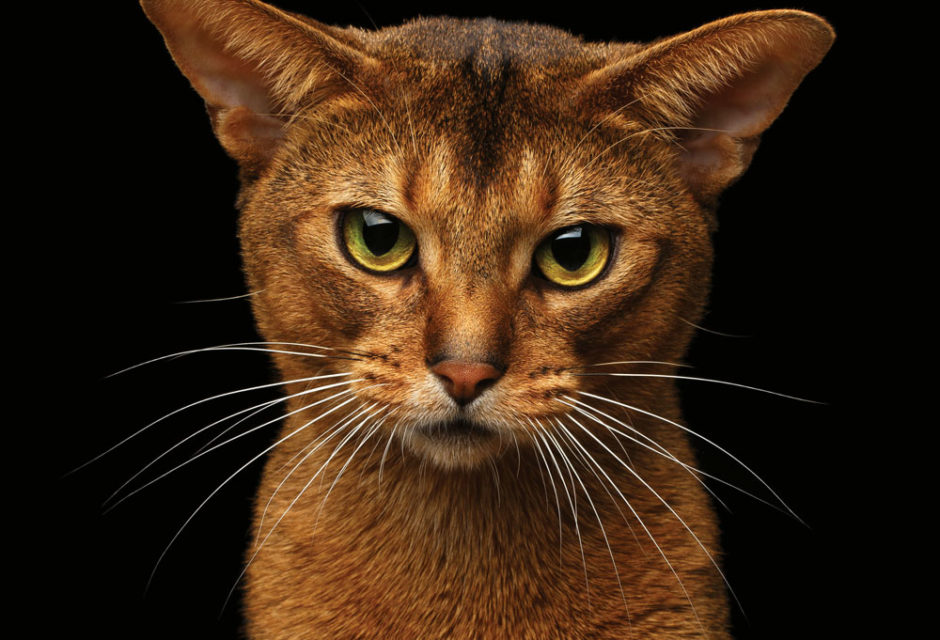
Cat-astrophe: Are You Making These 5 Mistakes?
Five things people unwittingly do wrong when it comes to their cats
We asked Mikkel Becker, a Fear Free certified animal trainer, for the top five mistakes she sees people making with their cats. Here is her nix list.
Mistake #1: Feed From a Food Bowl
“The food bowl misses the mark when it comes to an awesome opportunity to challenge your cat’s body and mind. Cats like to prowl, pounce, and hunt for their food. Mealtime is the ideal time to invoke your cat’s inner lion or lioness. Rather than just mindlessly eating, challenge your cat to scout out, hunt down, capture, and ultimately enjoy portions of their meal in stages. To do this, feed from a food puzzle rather than from a bowl. Doing so will contribute to a more content, settled, easier to live with cat.”
Doc & Phoebe’s Indoor Hunting Feeders engage your cat’s instincts by letting them hunt for their food! $20, docandphoebe.com
Mistake #2: Free feed or over feed
“Over half of cats are overweight or obese.The extra pounds may appear harmless or even cute—more-to-love-on, right? Not so much; the extra pounds can shorten your cat’s lifespan, as well as decrease your cat’s quality of life during day-to-day activities. Extra pounds increase stress and pain on the joints, decrease mobility, and increase the risk of certain health conditions, like diabetes. If you feel that food equals love, just remember that one study actually showed that cats were more affectionate with their humans when they were fed a moderate, controlled diet versus an excessive amount of food.
Free-feeding also limits your ability to monitor your cat’s health. Because cats are so adept at hiding illness, a diminished appetite may be one of the only outward signs that your cat isn’t feeling well. Monitoring your cat’s food intake is a vital way to keep tabs on how your feline feels, allowing for timely intervention with the cat’s vet. A healthy appetite and adequate water consumption is especially important for cats as they can suffer life threatening kidney failure if food and water intake is limited.”
Mistake #3: Assume cats are independent and don’t need extra attention
“Cats are not the solitary creatures they’re often portrayed to be. Many cats are actually very affectionate, sociable, and enjoy time with their humans and, in some cases, other animals. Cats can develop distress upon separation from their people and become very upset by a change in caregivers. For that reason, preparing your cat to calmly handle times of separation is important, as is keeping a consistent caregiver when you’re away. More than merely feeding and scooping the litterbox, make sure the caregiver also takes time to play with and pet your cat. Ensuring your cat has company while you are away lowers stress and helps your cat to pass the time and take your absence in stride. Even more withdrawn or shy cats appreciate a consistent caregiver and predictable schedule and routine for visits, feeding and litter scooping.” Is your cat lonely?
Mistake # 4: Forgo regular veterinary check in’s
“Cats are expert at hiding illness and pain. Ongoing, preventive veterinary care is a must-do for keeping cats healthy and happy and catching illness in the early stages. Timely intervention ultimately increases the chance of a positive prognosis and increased quality of life. Don’t let your cat’s fear keep you from taking your cat to the vet. Find tips for lowering vet visit stress at FearFreeHappyHomes.com or look for a professional who will actively partner with you in your efforts to protect your cat’s emotional wellbeing during the delivery of physical care.”
Mistake #5: Believe that socialization efforts are important only for dogs
“Cats are highly sociable, friendly, intelligent creatures who relish opportunities to learn. Humans often do kittens a disservice by not prioritizing happy, early learning experiences in the same way as is done for puppies. Because far too few kittens are offered positive exposure to a wide variety of people, other animals, and situations in the same way that puppies are, kittens are less likely to be as adaptable and calm in the face of varied situations encountered in the future. Early exposure paired with positive reinforcement and introduced at a pace the cat is comfortable with is helpful for creating a foundation of confidence the cat can lean on throughout life. Intentional exposure by foster families, rescues, breeders, or early adopters is important for offering the key early learning experiences that cats need.”
Join the newsletter and never miss out on cat content again!
"*" indicates required fields
By clicking the arrow, you agree to our web Terms of Use and Privacy & Cookie Policy. Easy unsubscribe links are provided in every email.





